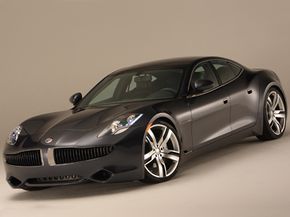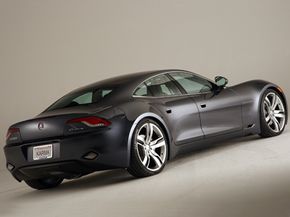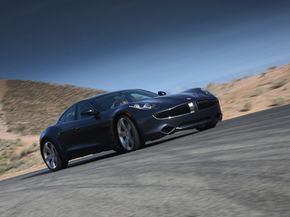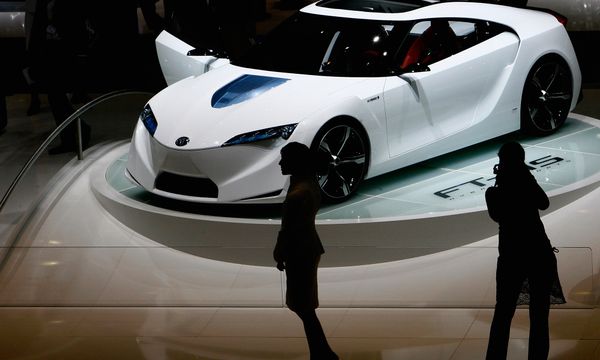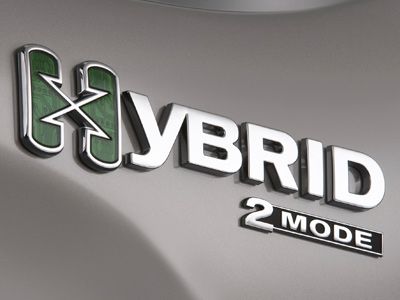Imagine what it would be like to buy gas only once a year, or maybe even never again. Now, imagine a whisper-quiet car that can out-perform most luxury sedans in both speed and comfort. Imagine a car with a conscience. Henrik Fisker imagined these things, and then decided to make his dream a reality -- the Fisker Karma.
The basic idea of a plug-in hybrid electric vehicle has been making inroads into the fossil-fuel-heavy auto market for some years now. But Fisker and co-founder Bernhard Koehler didn't just design a car; in 2007 they established a new American car company and much of that company's ethic is instilled in the Karma, along with a level of luxury currently seen only in high-end sedans.
Advertisement
The Karma, a slick roadster with the reported chops to back up the image, is a plug-in hybrid electric vehicle (PHEV). It pairs a large battery pack and a small gasoline engine to get the most from each element. The batteries can be charged through traditional home outlets or through a generator turned by the car's engine. The relationship between these elements is tuned through proprietary systems crafted by Quantum Technologies, a company that delves into alternate fuel and drive systems for civilian and military vehicles. The result is a sports car that gets about 100 miles per gallon (42.5 kilometers per liter) and looks good while doing it, too.
While there are more PHEVs set to go on the market than ever before, Fisker has added a few twists to differentiate the Karma. These offerings include an option for roof-mounted solar cells to help recharge the car and an optional large stationary solar array for mounting on a house or garage -- think of this as an at-home, solar refueling station. They also pitch the car as "eco-chic," with environmentally-friendly elements abound, both inside and out. For instance, accents carved from reclaimed wood to leather seats crafted using up to 85 percent of the cow's hide rather than simply the choicest parts.
The Fisker Karma is said to be destined for driveways later in 2009; however, whether it will become a common sight on the road or simply another chapter in the history of the automobile remains to be seen.
Keep reading to find out more about the Karma, the bright new world of PHEVs and consider whether or not you're ready to pony up the estimated $80,000 to be the first on the block to plug in your car at night.
Advertisement
